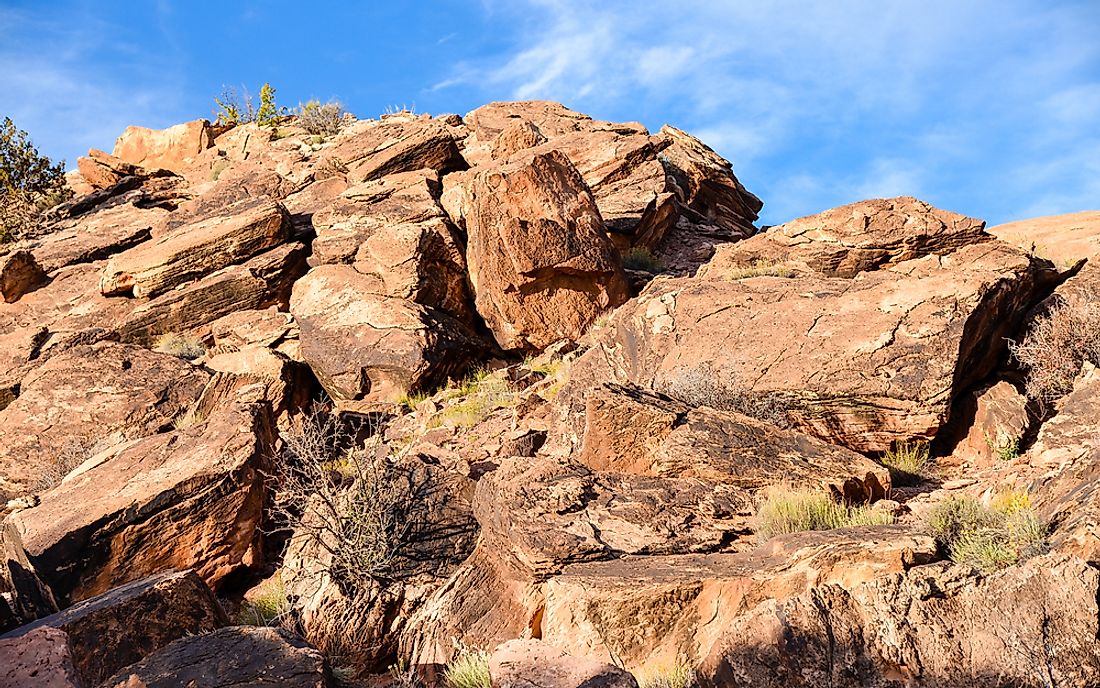What Is An Extrusive Rock?

The solidification of molten rock material produces two basic types of igneous rocks. The crystallization of molten rock material in the earth’s crust creates both extrusive and intrusive igneous rocks. Extrusive igneous rocks are formed when the crystallization and solidification of rock material occur on top of the surface. Due to the volcanic eruption that takes the sediment to the surface, the cooling process of extrusive rocks is quick. This fast cooling process allows the formation of small crystals, and the cooling process of molten lava may occur so fast that it might form an amorphous glass.
Some examples of extrusive rocks
Andesite
The name Andesite is used to refer to a family of extremely fine grains of extrusive igneous rocks that are usually colored in light or dark grey. Andesites typically take on various shades when they are weathering and may include shades of brown. Some minerals that might be found in andesite rocks may include biotite, pyroxene, or amphibole. Andesites are also known to be rich in plagioclase feldspar minerals. These types of extrusive rocks are usually found in the flow of lava produced by stratovolcanoes. The cooling of this lava occurs rapidly as any other extrusive rocks, so they form small crystals.
Obsidian
Obsidian igneous extrusive rocks are formed when molten rocks cool off so rapidly on the surface of the earth and the atoms are not arranged in a crystallized manner. It forms an amorphous material commonly known as Mineraloid. A mineraloid is a form of volcanic glass that forms a smooth with consistent texture that fractures in a conchoidal manner. Obsidian extrusive rock mostly forms at the surface of the earth, and they could also be formed in several places. Obsidian rocks might be found along the edges of any lava flow, at the edges of a volcanic dome, around a sill, or dike and they also form when molten lava comes in contact with water.
Basalt
Basalt is dark in color and it crystallizes into fine grains. It also contains a substantial amount of pyroxene and plagioclase minerals. Although Basalt almost always forms extrusive igneous rock on lava flows, it may sometimes take the form of small intrusive rock bodies like the igneous dike and a thin sill. Basalt as an extrusive rock has vast presence on the surface of the earth. It covers the earth’s surface more than any other type of rock. Some of the areas that Basalt is abundant are the oceanic basins on Earth. Basalt is an essential rock due to its abundance on the planet. It is important to note that Basalt also occurs on other solar bides like the moon and Mars.
Basalt on Moon and Mars
Basalt lava flows and flooding basalt cover most of the moon’s surface. The areas of the moon that has vast presence of Basalt rocks are known as the “Lunar Maria.” The extensive formation of basalt flows covers expansive surfaces of the moon. Other events might have triggered these occurrences. A mountain which is a shield volcano, “the Olympus Mons” on the planet Mars was also formed as a result of basaltic lava flows and it is the highest mountain on Mars and also the largest volcano in the solar system. The lunar basalts have some slight difference with the Earth basalt rocks due to the high contents of iron.











